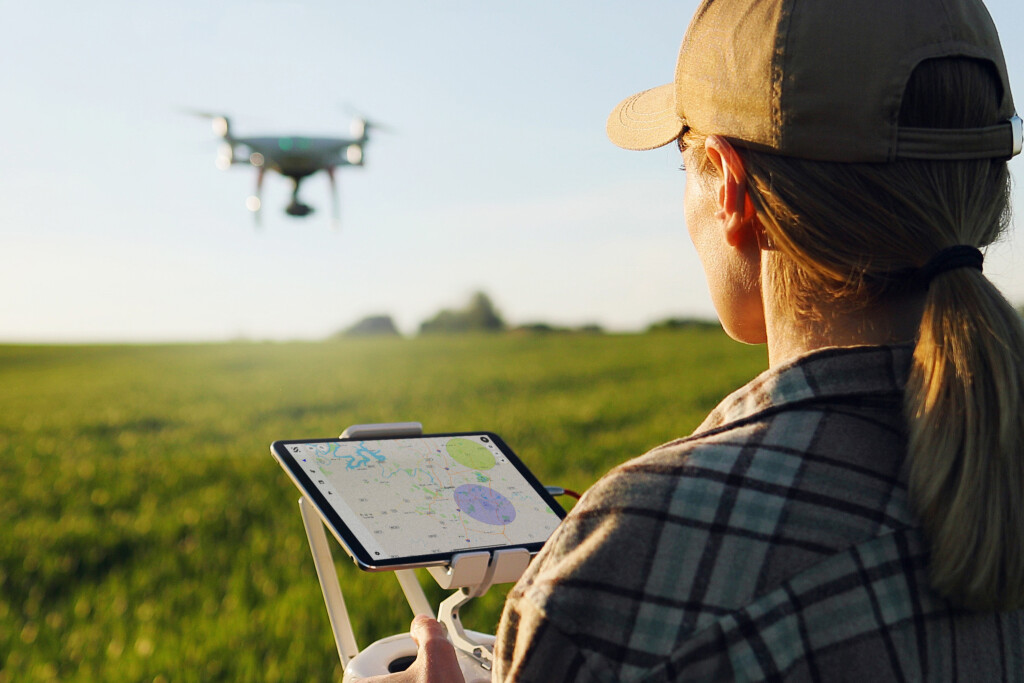In low-altitude airspace, conditions are unpredictable and constantly shifting. Commercial drone operators must monitor weather changes, avoid buildings and temporary objects, factor in risks on the ground, and maintain separation from other aircraft.
SkyGrid’s AerialOS™ system can improve UTM airspace management for operators. The system combines airspace awareness, flight operations, and fleet management in one solution that can monitor, predict, and adapt to changing conditions. The integrated system enables drone operators to intelligently route, synchronize, and maintain unmanned aircraft. Public safety organizations, energy companies, security operations, and many more sectors can benefit from this solution.
In an interview, Ali Husain, Chief Product Officer at SkyGrid, talks about AerialOS, including its development, capabilities, and potential impact on UTM safety and efficiency.
Tell us about SkyGrid.
SkyGrid was formed in 2018 when two companies, Boeing and SparkCognition, joined forces. At the time, advancements in unmanned aerial vehicles were well underway. Drones had proven value in several industries, and the UAV market was expected to grow significantly in the years ahead. Looking towards a future where there are not just hundreds or thousands of aircraft occupying the skies, but billions of UAVs of all sizes fulfilling commercial and personal transport missions, these two companies recognized a gap in the industry. They knew a comprehensive system to safely integrate and manage unmanned aircraft in the global airspace would be essential for urban aerial mobility. In order to address this gap, Boeing and SparkCognition joined to form SkyGrid, an airspace management system focusing on innovation, agility, and most importantly—safety. By combining Boeing’s deeply rooted experience in the aerospace industry with SparkCognition’s advancements in artificial intelligence, SkyGrid is building the digital infrastructure that accelerates the next generation of aviation.
What are the challenges facing drone operators and how does AerialOS address those challenges?
The challenge is that today’s UTM systems require too many manual workflows that leave room for error in this complex airspace. The burden falls on drone operators to plan, execute, and adapt their flights as conditions change. At the same time, aviation authorities are expected to monitor the growing volume of drones and enforce airspace rules, while they are already experiencing maximum overload. It’s not feasible for operators and authorities to manage drones safely and efficiently with the current technologies available to them. We saw that a smarter approach to airspace management was required to intelligently route, synchronize, and maintain drones in shared airspace.
How does AerialOS address these issues?
Our system is built on AI and blockchain. We think this helps us offer a smarter airspace management system to fill the gaps unaccounted for in traditional UTM solutions.
Discuss the specific features of AerialOS.
SkyGrid’s AerialOS combines airspace awareness, flight operations, and fleet management. Airspace awareness is an innovative approach to UTM that uses AI and blockchain to automate standards compliance and provide visibility into the past, present, and predicted airspace. The application gives authorities and enterprises a complete picture of the sky in 2D or 3D with rich data layers, including airspace traffic, regulatory restrictions, weather forecasts, obstacle data, vehicle performance, and more.
With flight operations, we simplify the dynamic airspace by enabling commercial operators to automatically plan and execute optimal flight paths with AI-based route planning and deconfliction from other aircraft and obstacles.
Finally, our fleet management capabilities enable commercial drone operators and managers to intelligently assess, diagnose, and predict vehicle performance across their entire fleet. The application uses AI and blockchain to predict maintenance needs, generate service logs, and automate fleet distribution.
Can you provide some real-world scenarios that demonstrate the value of AerialOS?
The capabilities of AerialOS can be helpful to many industries and be adapted to many applications. For example, oil and gas companies have assets that are susceptible to manufacturing defects and damages caused by the environment, and leaks can lead to environmental disasters, property damage, or worker injury. AerialOS provides these companies with a new drone-based approach to inspecting pipelines. It’s an end-to-end platform that includes automatic inspection planning, autonomous fleet execution, and intelligent issue recognition.
Fire departments could also benefit from AerialOS. The system provides rapid surveillance and monitoring capabilities for fire services by applying AI-based drone technologies. This can optimize the distribution of drones over a defined space, calculate efficient routes for vehicles, help personnel analyze areas for fire risk, track the movement of wildfires, provide visibility to first responders, aid in search and rescue operations, and much more.
How will SkyGrid assist customers with implementation, training, and support for AerialOS?
SkyGrid Flight Control™, which is powered by the AerialOS, is essential to our implementation, training, and support efforts. SkyGrid Flight Control is an application that enables drone operators and enterprises to explore airspace, and automate airspace authorization, mission planning, and flight execution in one unified solution. It was created for drone operators who need access to airspace and launch flights in the field. The application automates flight authorization, planning, and execution in one end-to-end workflow. Available for free on the Apple App Store for iPhone and iPad users across the world, SkyGrid Flight Control also provides a knowledge base for operators along with a customer support portal.
SkyGrid Flight Control also helps enterprises that need to remotely manage their commercial fleet, pilots, and airspace operations. It’s a drone software suite that enables complete operational oversight and remote automation from the office. Unlike existing UTM and fleet management solutions, SkyGrid connects across these systems and uses AI and blockchain to provide a smarter, more complete drone operating system. A dedicated account manager is provided for organizations using the enterprise version of SkyGrid Flight Control.
What’s next for AerialOS and SkyGrid?
Our vision is to become the world’s most trusted airspace management system that integrates all unmanned aircraft in the global airspace. Ultimately, we believe the future of autonomous aviation requires a more comprehensive system to ensure the safety and security of our airspace. This requires next-generation technologies like AI and blockchain that traditional UTM platforms aren’t equipped with today. These advanced technologies can help automate the safest routes, adapt flights as conditions change, and protect against malicious activity. They can also mandate airspace compliance and enable immutable audit trails. At SkyGrid, AI and blockchain technologies are core to our platform. We believe they will help us to solve the industry’s biggest challenges in integrating drones in the global airspace.
















Comments